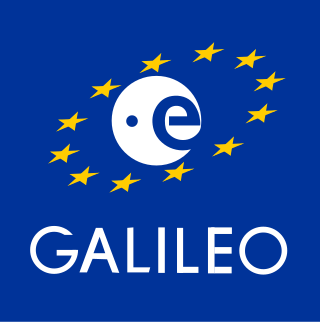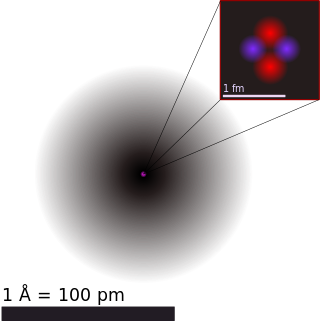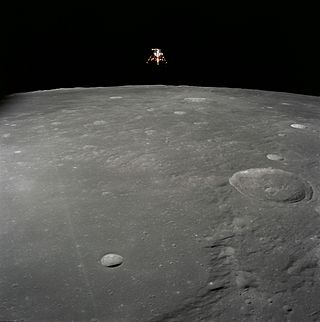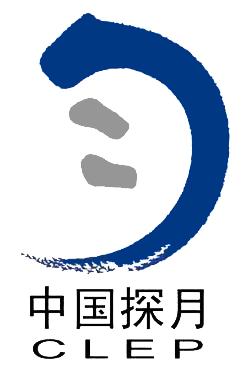Related Research Articles

The European Space Agency (ESA) is a 22-member intergovernmental body devoted to space exploration. With its headquarters in Paris and a staff of around 2,547 people globally as of 2023, the ESA was founded in 1975. Its 2024 annual budget was €7.8 billion.

Galileo is a global navigation satellite system (GNSS) created by the European Union through the European Space Agency (ESA) and operated by the European Union Agency for the Space Programme (EUSPA). It is headquartered in Prague, Czechia, with two ground operations centres in Oberpfaffenhofen, Germany, and in Fucino, Italy,. The €10 billion project went live in 2016. It is named after the Italian astronomer Galileo Galilei.

Spacelab was a reusable laboratory developed by European Space Agency (ESA) and used on certain spaceflights flown by the Space Shuttle. The laboratory comprised multiple components, including a pressurized module, an unpressurized carrier, and other related hardware housed in the Shuttle's cargo bay. The components were arranged in various configurations to meet the needs of each spaceflight.

Science policy is concerned with the allocation of resources for the conduct of science towards the goal of best serving the public interest. Topics include the funding of science, the careers of scientists, and the translation of scientific discoveries into technological innovation to promote commercial product development, competitiveness, economic growth and economic development. Science policy focuses on knowledge production and role of knowledge networks, collaborations, and the complex distributions of expertise, equipment, and know-how. Understanding the processes and organizational context of generating novel and innovative science and engineering ideas is a core concern of science policy. Science policy topics include weapons development, health care and environmental monitoring.

The Goddard Space Flight Center (GSFC) is a major NASA space research laboratory located approximately 6.5 miles (10.5 km) northeast of Washington, D.C., in Greenbelt, Maryland, United States. Established on May 1, 1959 as NASA's first space flight center, GSFC employs about 10,000 civil servants and contractors. Named for American rocket propulsion pioneer Robert H. Goddard, it is one of ten major NASA field centers. GSFC is partially within the former Goddard census-designated place; it has a Greenbelt mailing address.
Surrey Satellite Technology Ltd, or SSTL, is a company involved in the manufacture and operation of small satellites. A spin-off company of the University of Surrey, it is presently wholly owned by Airbus Defence and Space.
The Lunar and Planetary Institute (LPI) is a scientific research institute dedicated to study of the solar system, its formation, evolution, and current state. The Institute is part of the Universities Space Research Association (USRA) and is supported by the Science Mission Directorate of the National Aeronautics and Space Administration (NASA). Located at 3600 Bay Area Boulevard in Houston, Texas, the LPI is an intellectual leader in lunar and planetary science. The Institute serves as a scientific forum attracting world-class visiting scientists, postdoctoral fellows, students, and resident experts; supports and serves the research community through newsletters, meetings, and other activities; collects and disseminates planetary data while facilitating the community's access to NASA astromaterials samples and facilities; engages and excites the public about space science; and invests in the development of future generations of scientists. The LPI sponsors and organizes several workshops and conferences throughout the year, including the Lunar and Planetary Science Conference (LPSC) held in March in the Houston area.

OHB SE, headquartered in Bremen, is a European space and technology group specializing in the development and implementation of complete space systems, the production of components for various launcher programs as well as the operation of satellite systems and the processing and provision of the data collected. The company employs over 3,000 people at 15 locations in ten countries, most of them in Europe.

The International Year of Astronomy (IYA2009) was a year-long celebration of astronomy that took place in 2009 to coincide with the 400th anniversary of the first recorded astronomical observations with a telescope by Galileo Galilei and the publication of Johannes Kepler's Astronomia nova in the 17th century. The Year was declared by the 62nd General Assembly of the United Nations. A global scheme, laid out by the International Astronomical Union (IAU), was also endorsed by UNESCO, the UN body responsible for educational, scientific, and cultural matters.

The physical exploration of the Moon began when Luna 2, a space probe launched by the Soviet Union, made a deliberate impact on the surface of the Moon on September 14, 1959. Prior to that the only available means of lunar exploration had been observations from Earth. The invention of the optical telescope brought about the first leap in the quality of lunar observations. Galileo Galilei is generally credited as the first person to use a telescope for astronomical purposes, having made his own telescope in 1609, the mountains and craters on the lunar surface were among his first observations using it.

The Chinese Lunar Exploration Program, also known as the Chang'e Project after the Chinese Moon goddess Chang'e, is an ongoing series of robotic Moon missions by the China National Space Administration (CNSA).

A moonbase is a human outpost on or below the surface of the Moon. More than a mere site of activity or temporary camp, moonbases are extraterrestrial bases, supporting robotic or human activity, by providing surface infrastructure. Missions to the Moon have realized single-mission bases,, as well as some small permanent installations.

Thales Alenia Space is a joint venture between the French technology corporation Thales Group (67%) and Italian defense conglomerate Leonardo (33%). The company is headquartered in Cannes, France.
The Moon Lightweight Interior and Telecoms Experiment (MoonLITE), was a proposed British space mission to explore the Moon and develop techniques for future space exploration. If funded, it would have been built by a consortium of UK industry likely including Surrey Satellite Technology, and it was planned to be launched into lunar orbit in 2014. The mission concept emerged from a study run by the Particle Physics and Astronomy Research Council in 2006. In December 2008, the British National Space Centre announced that the project was moving to a 12-month Phase A study of the mission systems and the planned penetrators.

The National Aeronautics and Space Administration is an independent agency of the U.S. federal government responsible for the civil space program, aeronautics research, and space research. Established in 1958, it succeeded the National Advisory Committee for Aeronautics (NACA) to give the U.S. space development effort a distinct civilian orientation, emphasizing peaceful applications in space science. It has since led most of America's space exploration programs, including Project Mercury, Project Gemini, the 1968–1972 Apollo Moon landing missions, the Skylab space station, and the Space Shuttle. Currently, NASA supports the International Space Station (ISS) along with the Commercial Crew Program, and oversees the development of the Orion spacecraft and the Space Launch System for the lunar Artemis program.
The International Lunar Network or ILN was a proposed network of lunar surface stations to be built by the United States and the other space-faring countries in the 2010s. Each of these stations would act as a node in a lunar geophysical network. Ultimately this network could comprise 8-10 or more nodes operating simultaneously. Each node would have a minimum of two core capabilities. These capabilities include seismic sensing, heat flow sensing, and laser retroreflectors, and would be specific to each station. Because some nodes were planned to be located on the far side of the Moon, NASA would have contributed a communications relay satellite to the project. Individual nodes launched by different space agencies could have carried additional, unique experiments to study local or global lunar science. Such experiments might include atmospheric and dust instruments, plasma physics investigations, astronomical instruments, electromagnetic profiling of lunar regolith and crust, local geochemistry, and in-situ resource utilization demonstrations.
Global Hands-On Universe (GHOU) is an educational program that enables students to investigate the Universe while applying tools and concepts from science, math, and technology. Using the Internet, GHOU participants request observations from an automated telescope, download images from an image archive, and analyze them with the help of image processing software.

The Cyprus Space Exploration Organisation (CSEO) is a non-governmental, nonprofit, science organisation, based in Cyprus, with a global scope of service and activities. Its main functions are research and development, space advocacy, and international cooperation in the field of space exploration, astronautics and astronomy. Education and outreach are also an important part of its mission as International Astronomy Education Center.
References
- ↑ "Global Science Opera - About". Global Science Opera. Retrieved 8 April 2017.
- ↑ "CREAT-IT joins the International Year of Light". RESEO European Network for Opera and Dance Education. Retrieved 8 April 2017.
- ↑ "SkyLight - A Global Science Opera". 2015 International Year of Light and Light-Based Technologies. Retrieved 8 April 2017.
- ↑ "CREAT-IT joins the International Year of Light". RESEO European Network for Opera and Dance Education.
- ↑ "SkyLight - A Global Science Opera". European Physical Society. Retrieved 8 April 2017.
- ↑ "CREAT-IT joins the International Year of Light". RESEO European Network for Opera and Dance Education. Retrieved 8 April 2017.
- ↑ "Moon Village Opera". Galileo Teacher Training Program. Retrieved 8 April 2017.
- ↑ "SkyLight – a Global Science Opera". European Physical Society. Retrieved 8 April 2017.
- ↑ "CREAT-IT joins the International Year of Light". RESEO European Network for Opera and Dance Education.
- ↑ "About - Global Science Opera". Global Science Opera. Retrieved 8 April 2017.
- ↑ "Science on a Worldwide Stage". Galileo Teacher Training Program. Retrieved 8 April 2017.
- ↑ "LM1 teams up with CREAT-IT and World Space Week". Lunar Mission One. Retrieved 8 April 2017.
- ↑ "LM1 teams up with CREAT-IT and World Space Week". Lunar Mission One. Retrieved 8 April 2017.
- ↑ "LM1 teams up with CREAT-IT and World Space Week". Lunar Mission One. Retrieved 8 April 2017.
- ↑ "SkyLight – a Global Science Opera". European Physical Society. Retrieved 8 April 2017.
- ↑ "Film Festival". International Year of Light 2015. Retrieved 8 April 2017.
- "Science on a Worldwide Stage". Galileo Teacher Training Program. Retrieved 8 April 2017.
- ↑ "Moon Village Opera". Galileo Teacher Training. Retrieved 8 April 2017.